















Peterborough
Ontario, Canada
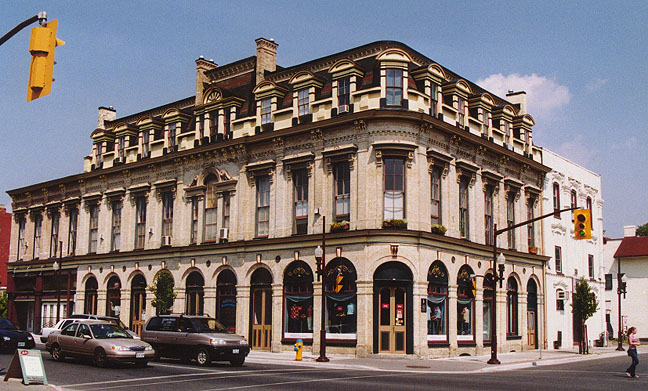
building on George street
Peterborough was first known as Scott’s Plains
back in 1820 when the first settler Adam Scott, built a gristmill. His
daughter was the first non-native child to be born in the area.
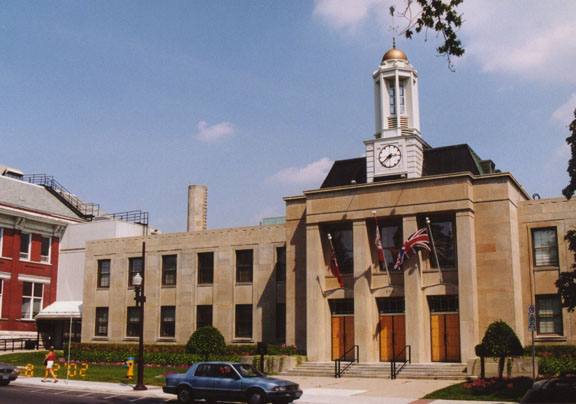
the town hall
When serious crop failures occurred in Southern Ireland, the
Irish people were offered 415 land grants in the surrounding Peterborough
townships. Peter Robinson, the brother of John Beverly Robinson, Chief Justice
of Upper Canada, was chosen in 1825, to act as an agent for the government to
bring the emigrants to Scott’s Plains. When the scheme was announced, he was
overwhelmed with over 50,000 applications. From these, Robinson selected 2,024
to make the journey.

newer extension to the town hall
(church in the background)
Each family was given a cow, eight quarts of Indian corn, five
bushels of seed potatoes, an axe, hammer, handsaw, a hundred nails, three
hoes, a kettle, frying pan, and an iron pot. Eighteen months after their
arrival, over 1300 acres had been cleared. In 1826, Robinson was honoured when
this settlement was renamed as Peterborough.
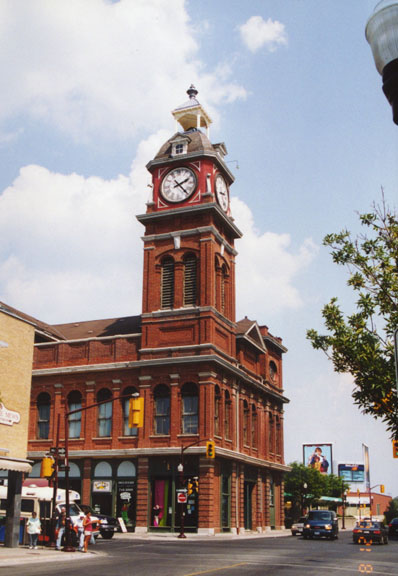
main feature on George street
With this influx of people, economic development quickly
followed with the establishment of mills on the Otonabee River and Jackson
Park Creek. Quaker Oats became the largest flourmill in the British Empire.
Naturally, lumbering was a major activity. The Dickson Lumber Company, founded
in 1840 and now known as Peterborough Lumber, shipped lumber to Europe.
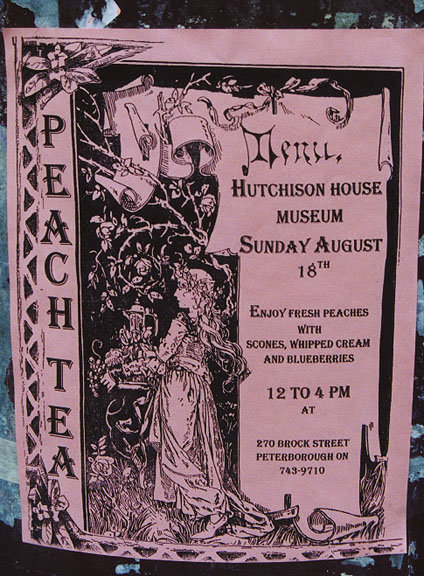
scones at the Museum Peach Tea
However, it was the canoe that made Peterborough famous. The
first “cedar strip” canoe was said to have been built in Lakefield in 1849,
and by 1880 John Stephenson, of Peterborough was marketing his “Cedar rib
canoe” in Canada, the US, and England. This grew into the Peterborough Canoe
Company, which, in 1956 was the largest boat manufacturer in Canada.
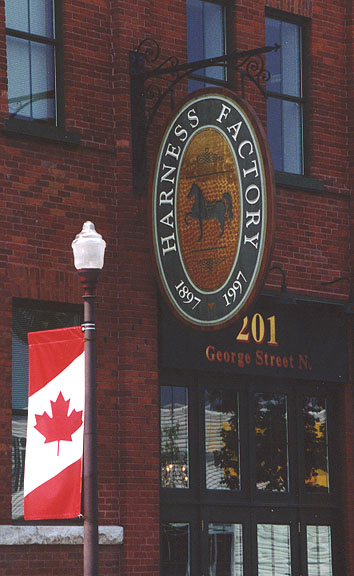
saddle shop
The Hudson Bay Company was the largest buyer of Peterborough
freight canoes (25 feet long, carrying 3000-5000 lbs), which were also a popular
item during the Klondike gold rush of 1898.
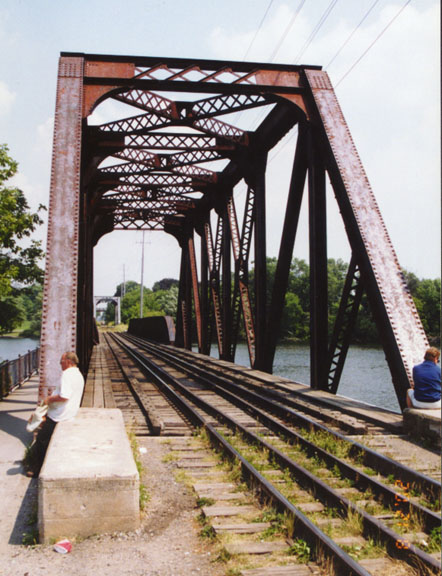
railroad coming across Otonabee
river
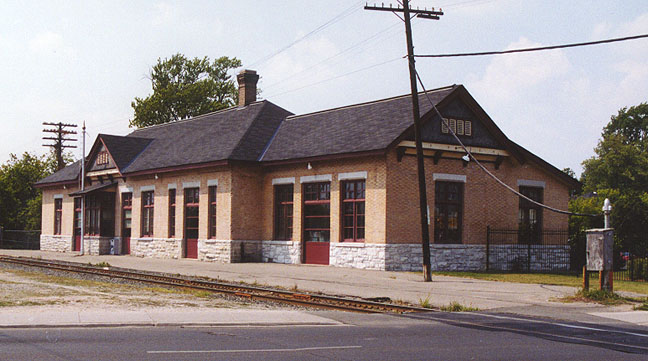
train station
Another custom built model was the “Girling Canoe”. The woman
passenger was seated in a long deck in the bow, while her suitor sat in a
specially moulded seat in the stern. Cabinets were fashioned under the deck on
both sides of the foremost seat; one presumably was for the storage of drinks,
while the other held a built-in phonograph and records. It was from her
comfortable bow seat that the female passenger could coyly trail her fingers
through the rippling waters, presenting an alluring picture her paddler could
not resist.
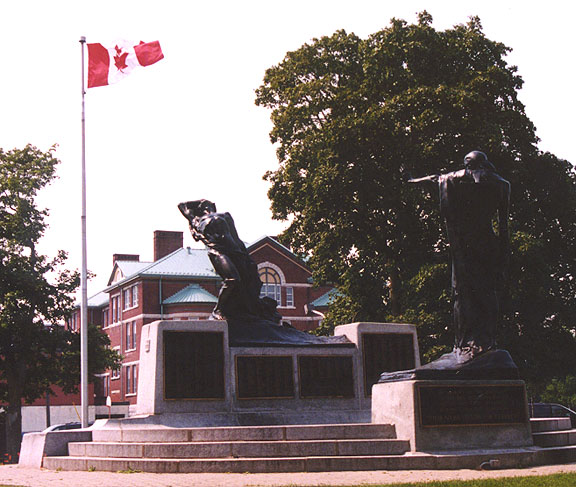
war memorial
During both World Wars, the manufacturing machinery, equipment,
and expertise of the PCC
(Peterborough Canoe Club) were requisitioned by the government of Canada.
During World War I, thousands of wooden boxes were made as containers for
shells. The Second World War saw the factory manufacturing such things as
pontoons for bridge building, assault boats, Royal Canadian Air Force crash
boats, and airplane skis. Snow skis were made in 1940 for shipment to Finland,
where they were put to use fighting an invasion by the Soviet Union.

listen to "The Wolf" at 101.5 FM
Today, Peterborough (pop.7O, 000) has a wealth of art
galleries, museums and historical points of interest to explore.
Text by Ontario Waterway Cruises

featuring trips to the Peterborough
Liftlock
(Bear is selling tickets?)
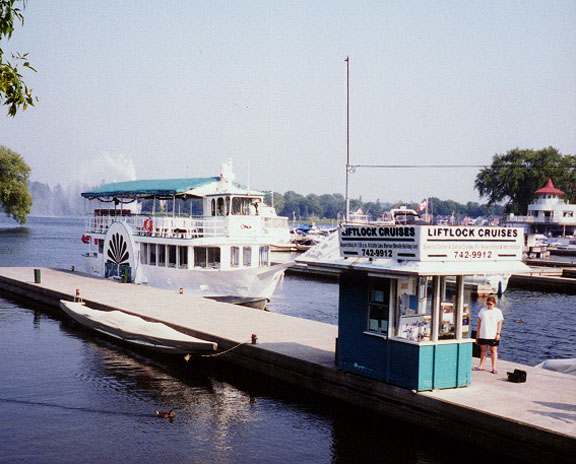
Day Cruises through the Liftlock
More Photos of the Peterborough
Liftlock

Return to Trent - Severn Waterway page
Return to Recent Adventures page



























Return to Canada page



















People and Places















![]()
![]()
![]()